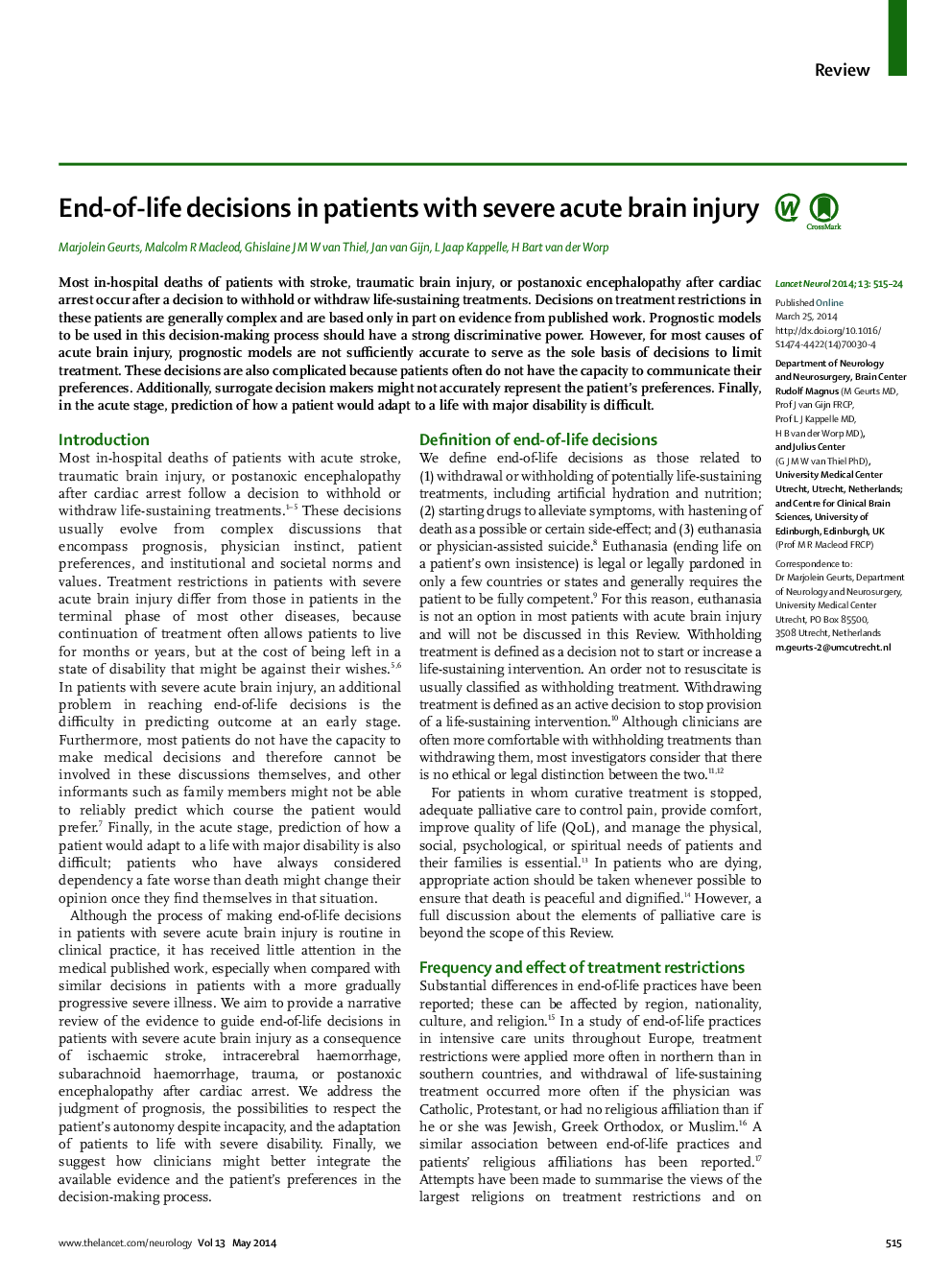| Article ID | Journal | Published Year | Pages | File Type |
|---|---|---|---|---|
| 3066627 | The Lancet Neurology | 2014 | 10 Pages |
SummaryMost in-hospital deaths of patients with stroke, traumatic brain injury, or postanoxic encephalopathy after cardiac arrest occur after a decision to withhold or withdraw life-sustaining treatments. Decisions on treatment restrictions in these patients are generally complex and are based only in part on evidence from published work. Prognostic models to be used in this decision-making process should have a strong discriminative power. However, for most causes of acute brain injury, prognostic models are not sufficiently accurate to serve as the sole basis of decisions to limit treatment. These decisions are also complicated because patients often do not have the capacity to communicate their preferences. Additionally, surrogate decision makers might not accurately represent the patient's preferences. Finally, in the acute stage, prediction of how a patient would adapt to a life with major disability is difficult.
